The weather has been all over the place, which we Iowans are well used to. As I began to write this on Tuesday, it was 75 degrees. On Wednesday, northern Iowa, Nebraska, and Minnesota were under a blizzard warning. Thursday was cool, but we will warm up over the weekend.
It’s all good.
At the top of the photo is the humerus, or upper arm bone, of a large bird. Turkey maybe? I found it in part of the prairie that had been burned.
Above is a phalanx, or one of the toe bones of a deer. I’ve walked over this spot thousands of times and never saw it before.
One warm day butterflies were everywhere! This one appears to be drying its wings. Is it a Red Admiral?
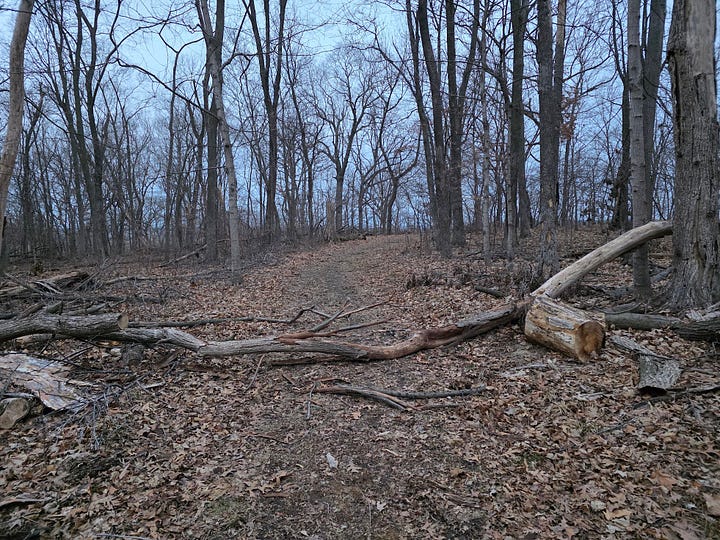
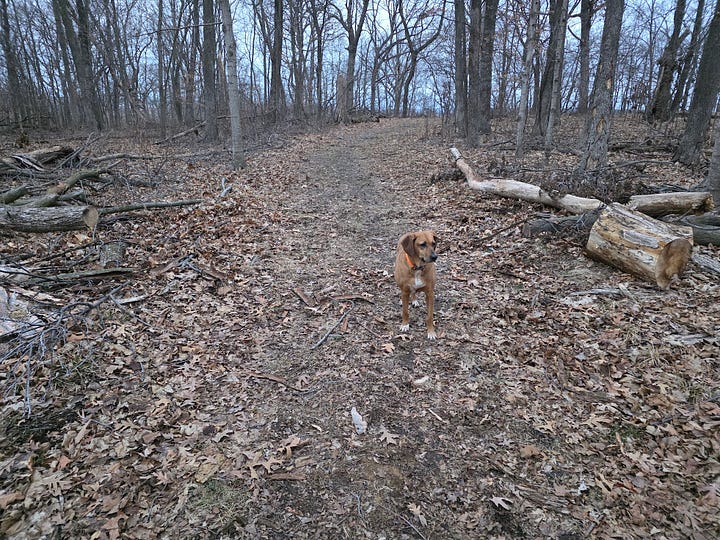
This is one of the joys of me being a volunteer park steward for Mahaska County Conservation. Violet the Dog and I enjoy clearing the path if a large branch is down so others who follow us can do so unobstructed. I used to carry a regular handsaw with me, but then Annie and Johanna gave me a collapsible saw for Christmas, and I carry it whenever I’m walking. It fits perfectly in the large pocket in the back of my orange vest. After high winds, if I can help clear fallen branches, it frees the Mahaska County Rangers to check out other parks. I’m happy to help and enjoy the exercise. Grandpa Leonard taught me when I was about six years old how to make the saw do most of the work, not your arm. So it’s easy, peasy.

Moss is beautiful all year round. I’m not sure what is going on here, other than it is beautiful, but maybe one of the biologists who subscribe to Cedar Creek Nature Notes can tell us.
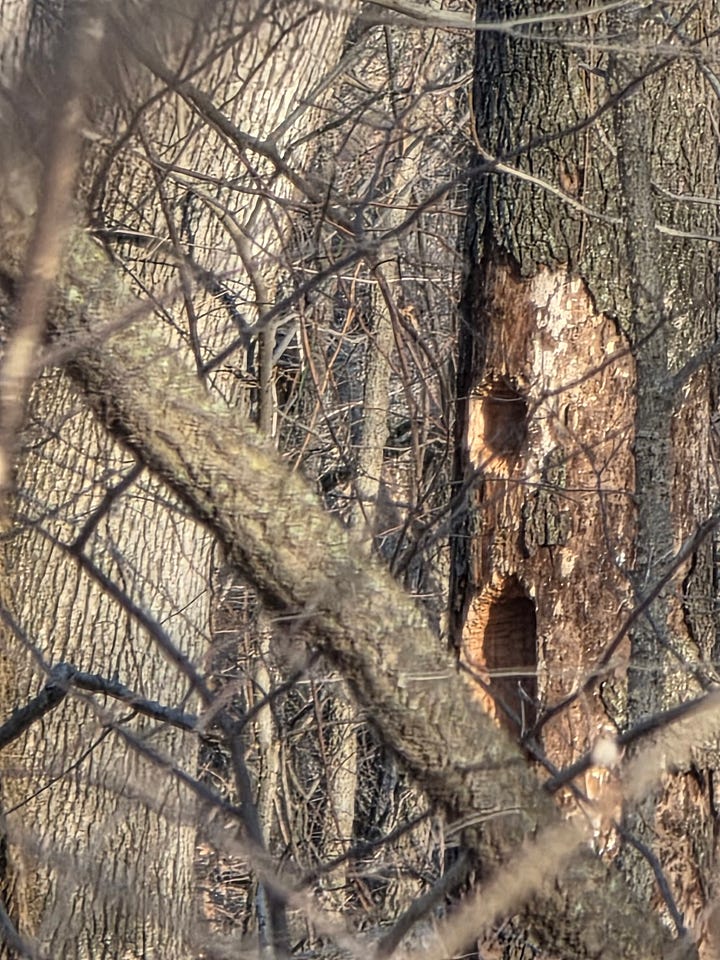
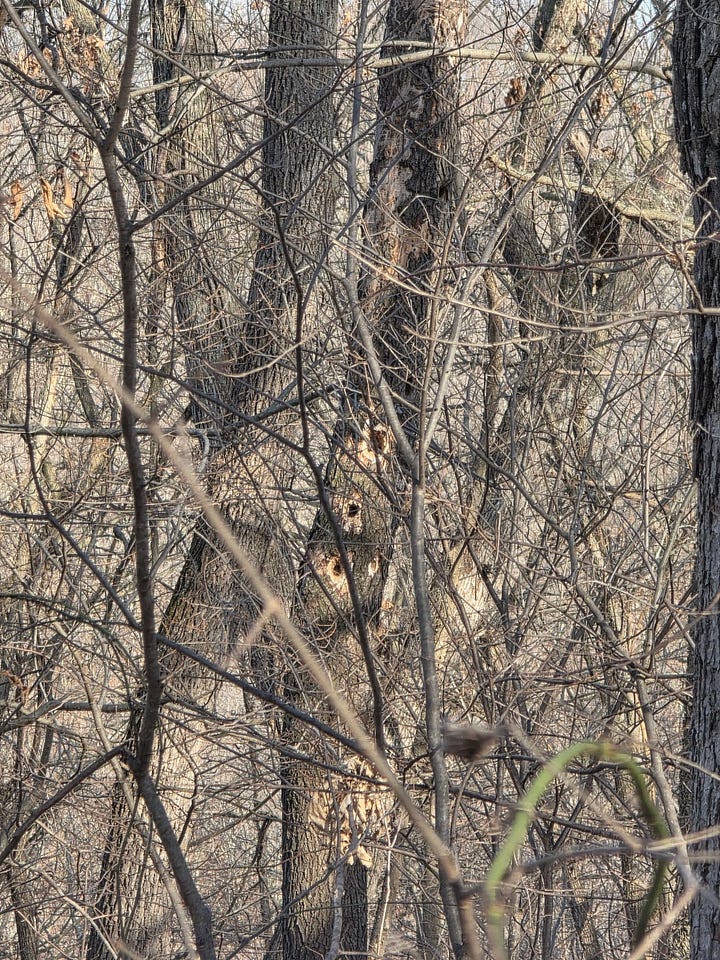
I rarely get phone calls at all, and even more rarely when I’m in the timber, in part because I prefer to be there at dawn. But one warm day last week I went out in the afternoon and received a phone call from a friend. It so happened that I was near a bench, so I sat down to talk, and in a couple of minutes, I noticed what I figured were Pileated Woodpecker nests. The photo on the left with the two holes is on the same tree on the right with the three holes. The three on the right are higher up.
Google AI tells me that Pileated woodpeckers excavate large, oblong to triangular-shaped nest cavities in dead trees or large limbs, often 15-70 feet above ground, and typically only use each cavity once.

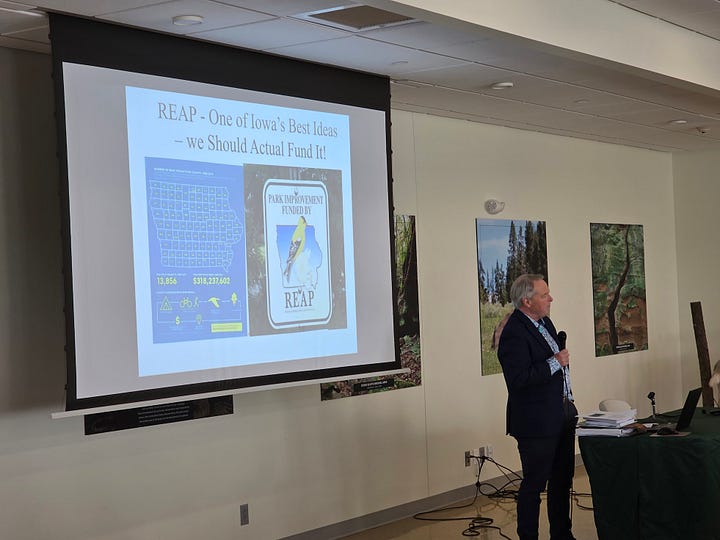
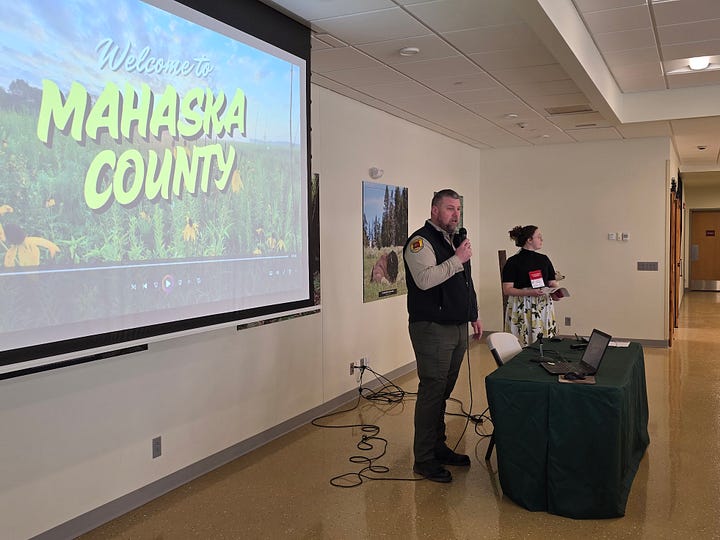
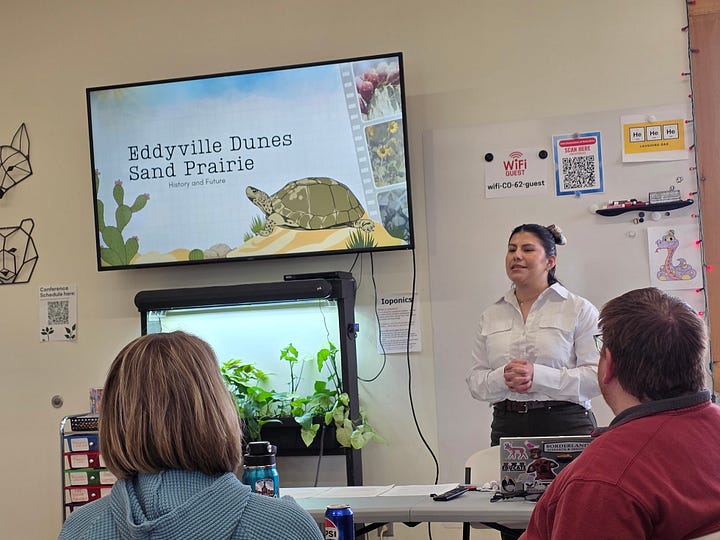
The Iowa Association of Naturalists held its annual meeting at the Mahaska County Environmental Learning Center in Oskaloosa recently. Director Chris Clingan, Naturalist Laura DeCook, other staff, and volunteers pulled off an amazing educational event. A crowd shot of the naturalists is in the upper left photo. A total of 80 registered, and I’m thinking maybe about 65 made it to the conference, by my count. To my surprise, all but about a dozen were women. Mostly young women.
Neil Hamilton, former Director of the Drake Agricultural Law Center, Professor Emeritus of Law is upper right, sharing the important story of Iowa Congressman John Lacey from Oskaloosa. Without Lacey, we might not have a national park system. Most recently, Neil is the author of The River Knows, and The Land Remains.
In the lower left, Director Chris Clingon introduces the tourism video about Mahaska County Parks, called “Home Away from Home.” Earlier this month, Mahaska County Conservation won the prestigious “You Rock” Geode Award at the Iowa Tourism Conference for the video!
While there were many wonderful presentations, I couldn’t attend them all. In the lower right, Lily Morin, with Green Iowa Americorps, who is working with Mahaska County Conservation, presented a fascinating discussion of the Eddyville Dunes Sand Prairie. When I grow up I want to be a biologist like Lily!
I was so impressed with all of the naturalists I spoke with. They know so much and care so much about our natural world and humanity that I know the world would be a better place if they were in Congress instead of the leaders we have had for generations. Probably since the time of Congressman John Lacey.
As I sat and listened, I thought about what a great investment our National, State, County, and City parks and recreation areas are.
Say the 65 naturalists stayed, on average, two nights for the conference in local hotels. They ate out and maybe bought some gas. I’m thinking they each spent on average maybe $300 on their visit. Let’s do the math: 65 x $300=$19,500 was spent by the naturalists.
They say every tourist dollar turns over 3-7 times in terms of economic impact in a community. Let’s say it turns over only five times. 5x$19,500=$97,500.
That one conference hosted by Mahaska County Conservation generated nearly $100,000 in revenue for Oskaloosa and Mahaska County!!!!
And that’s just one conference. Just think of the revenue the Mahaska County Park System (or any other good county park system) generates with the THOUSANDS or maybe TENS OF THOUSANDS of visitors they draw each year. And that’s not even considering the educational, recreational, and mental health benefits of our parks for locals.
Many people—especially elected officials—are often short-sighted and consider our parks only from a cost perspective. Our parks and other public lands aren’t a COST. They are an INVESTMENT that pays for itself many times over in many ways.
Protect and invest in our public lands!
One of the highlights for me was when four naturalists joined me for a walk at Cedar Bluffs. As we walked, I told them that this was the ground that John Lacey walked as a boy, and where he likely formulated the idea that while rich people could buy as much land as they wanted, we need public lands for the rest of us. And that it was here, in Mahaska County, Iowa, that the seed of the idea of our national park system was planted.
I thank them for taking a walk with me, and I trust that our natural heritage is in good hands with them.
I hope you do too. Please honor and support them.
Thanks for reading! Here are four of my favorite nature Substacks: Larry Stone’s “Listening to the Land,” Diane Porter’s My Gaia, Al Batt’s Al’s Substack, and Jaron Sedlock’s Jaron’s Curious Adventures. Please consider subscribing. All will entertain, educate, and soothe your soul.
I’m a member of the Iowa Writers Collaborative. Please sample the talents of my fellow collaborative members. If you can afford to be a paid subscriber, that would be great. If not, the vast majority of content is free.

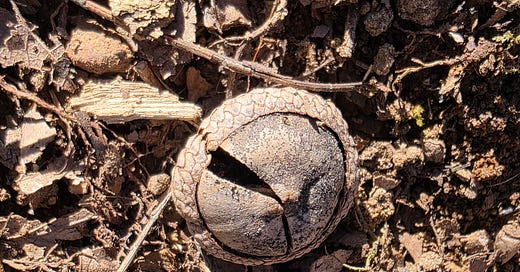



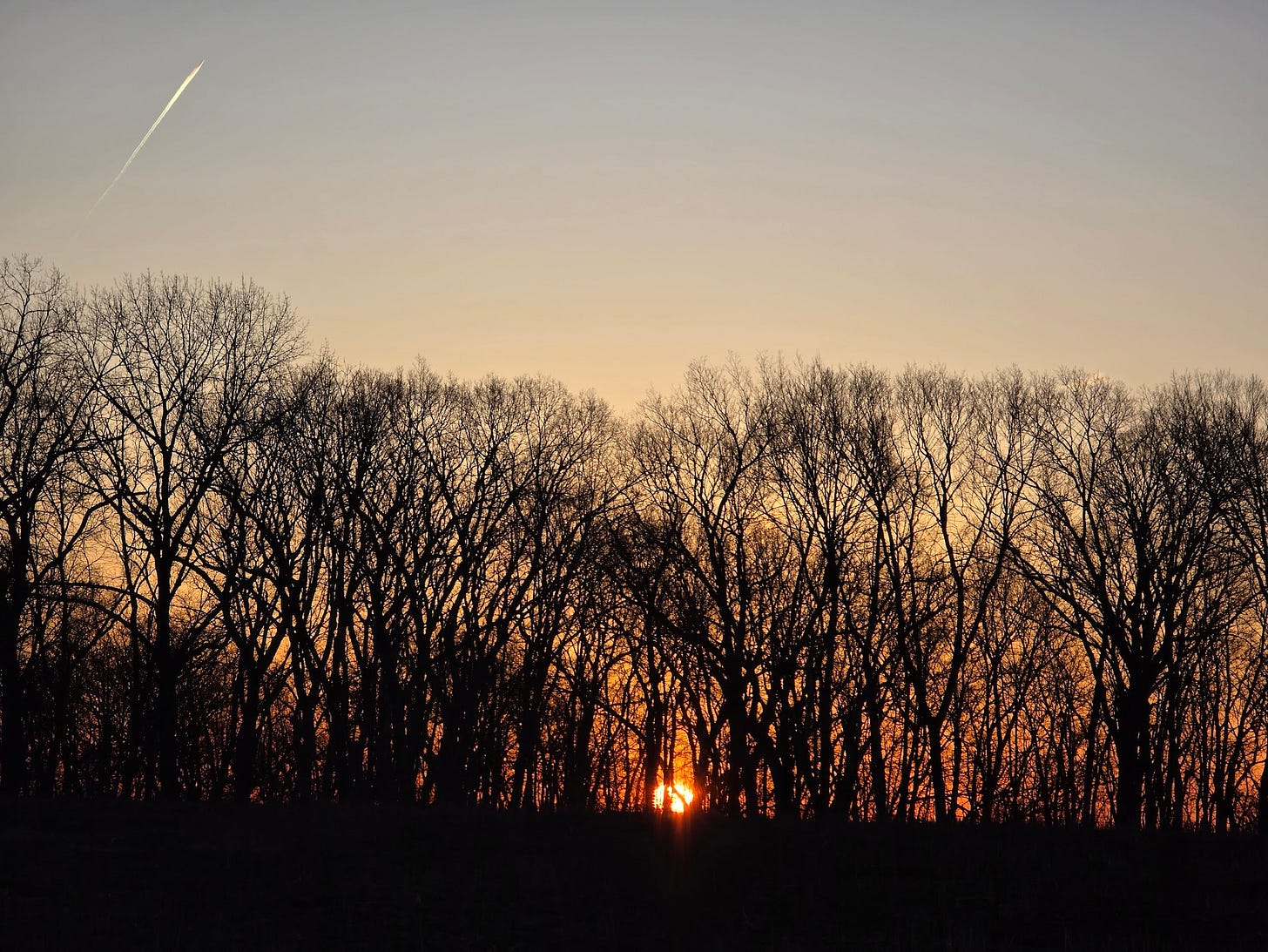

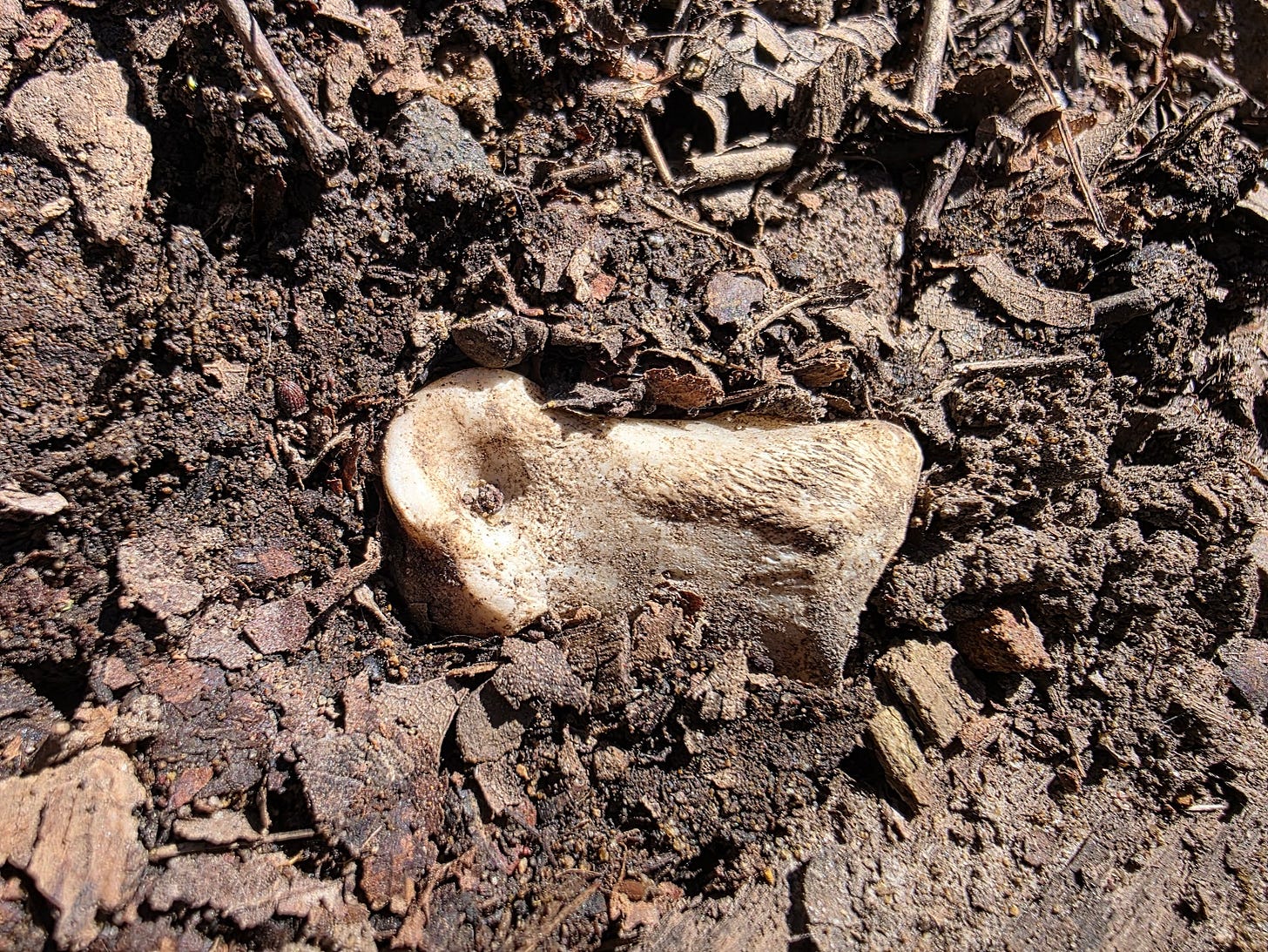
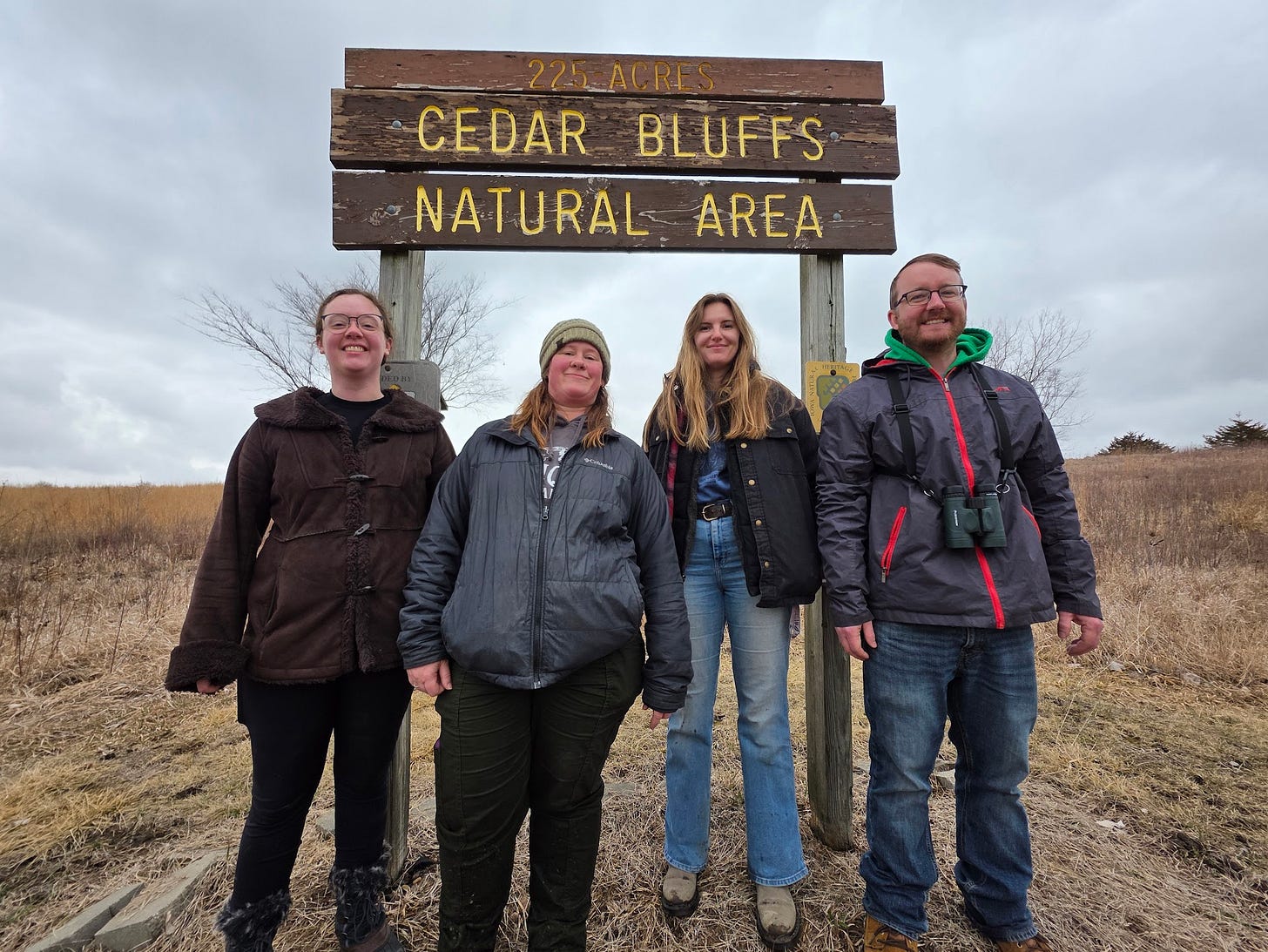
"Our parks and other public lands aren’t a COST. They are an INVESTMENT that pays for itself many times over in many ways."
It's one of the distinctions that routinely is lost in political disputes: there is such a profound difference. It's ALL the difference. Money allocated to healthcare is an investment. Money allocated to education is an investment. Money allocated to wildlife conservation is an investment. These things pay dividends – just not this fiscal quarter.
Hi Bob. The orange stalks on the green moss are the reproductive structures - the sporophyte (diploid) generation. These only appear when conditions are warm enough and wet enough to produces spores. Amazingly the green moss we see most of the time is the gametophyte (haploid - half the number of chromosomes) generation. This is the equivalent to the haploid sperm and egg cells of vertebrates.